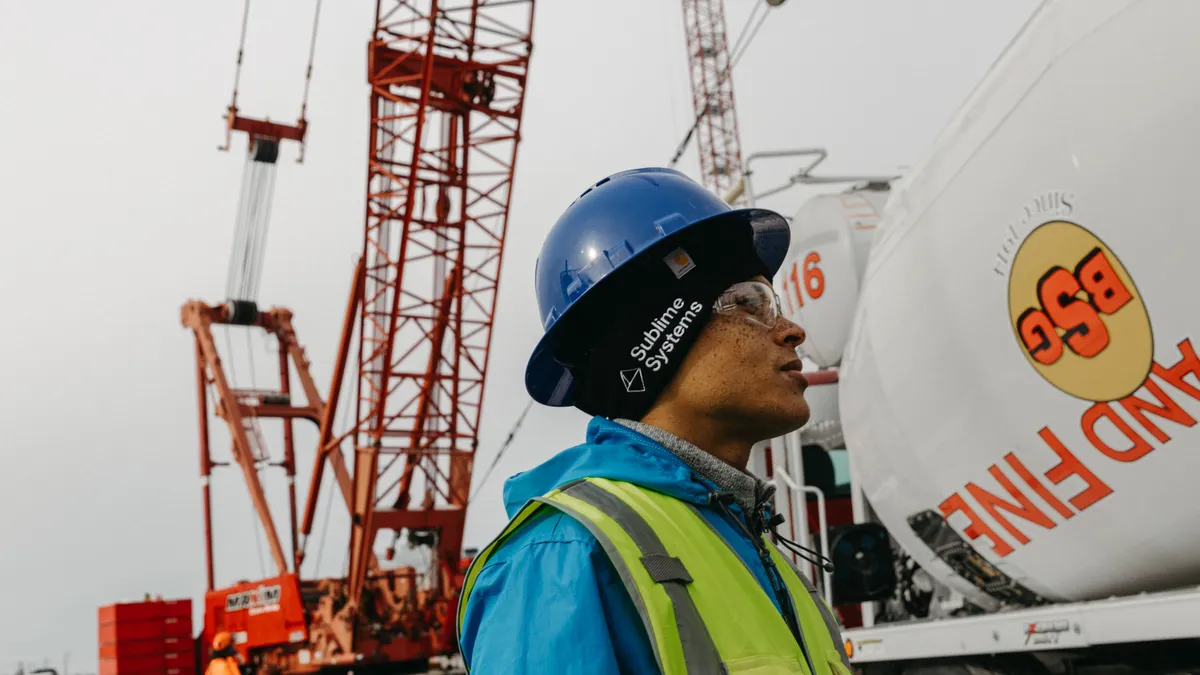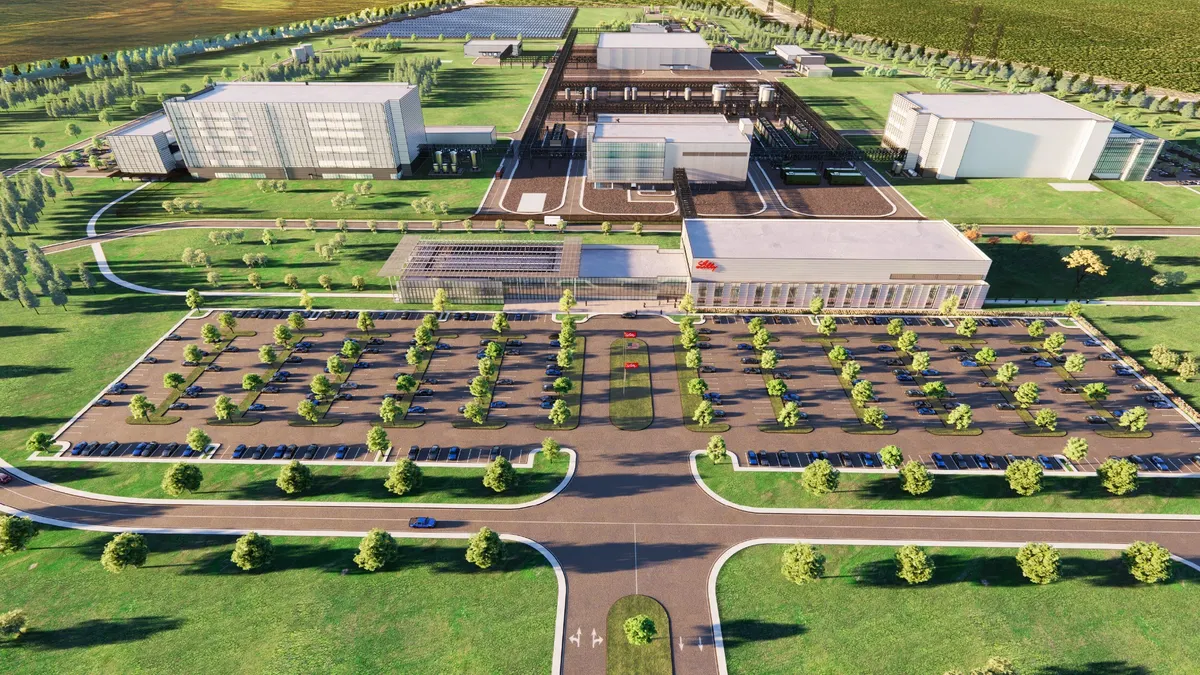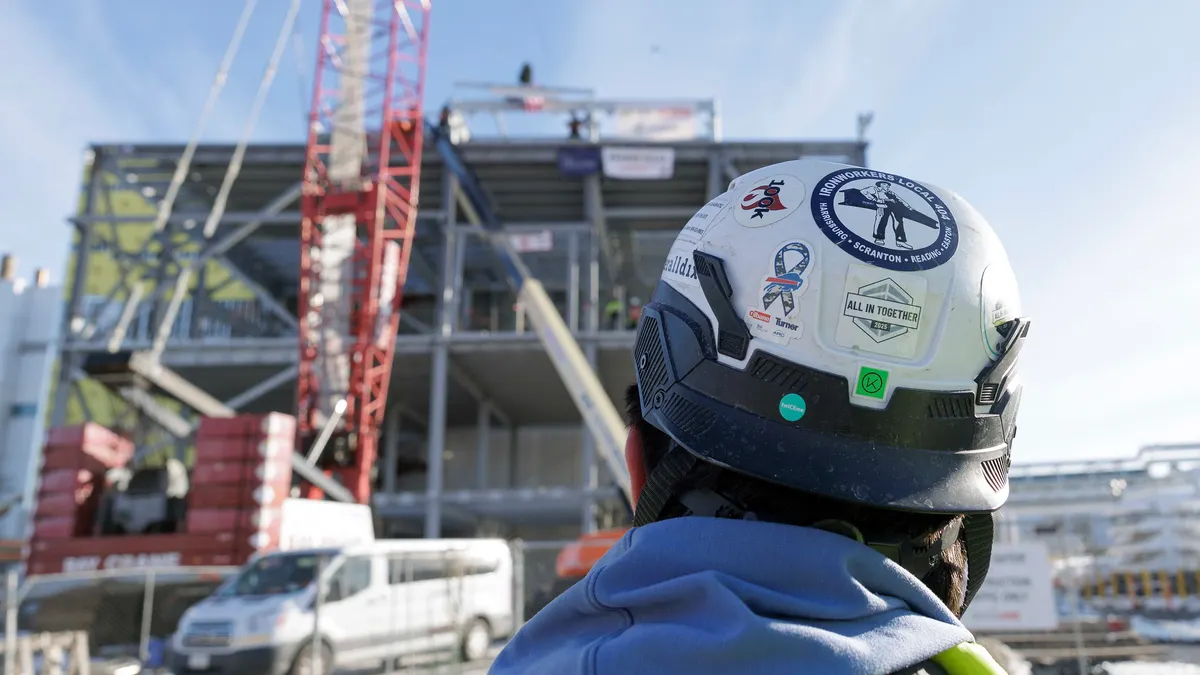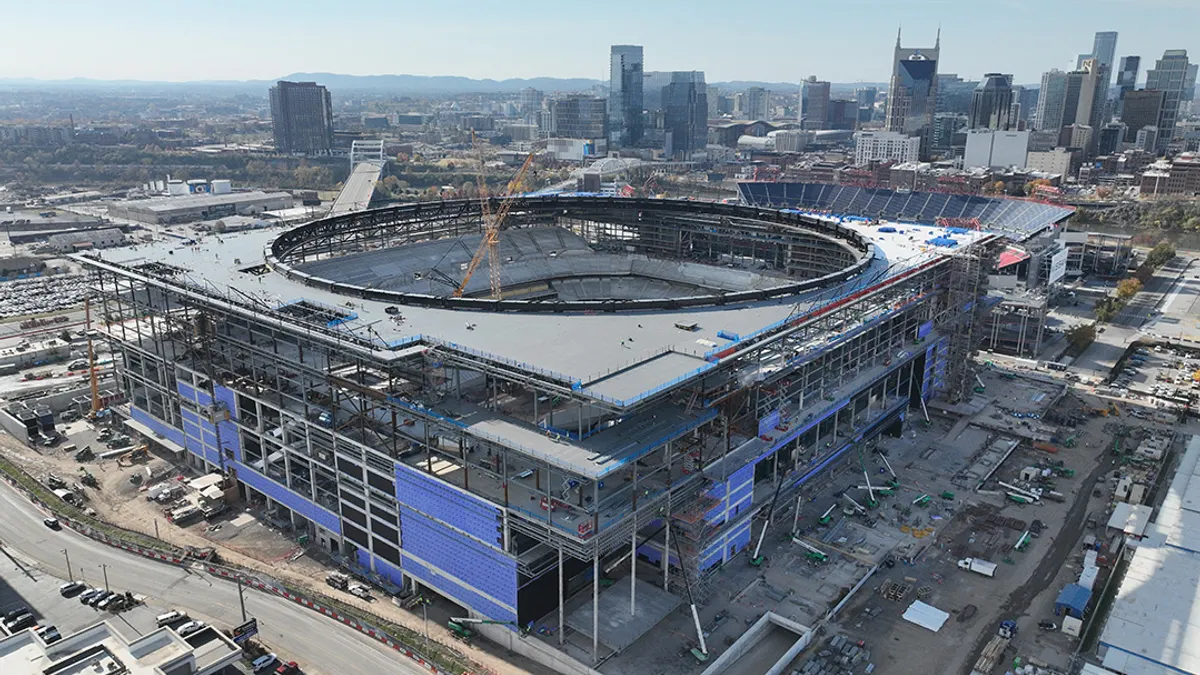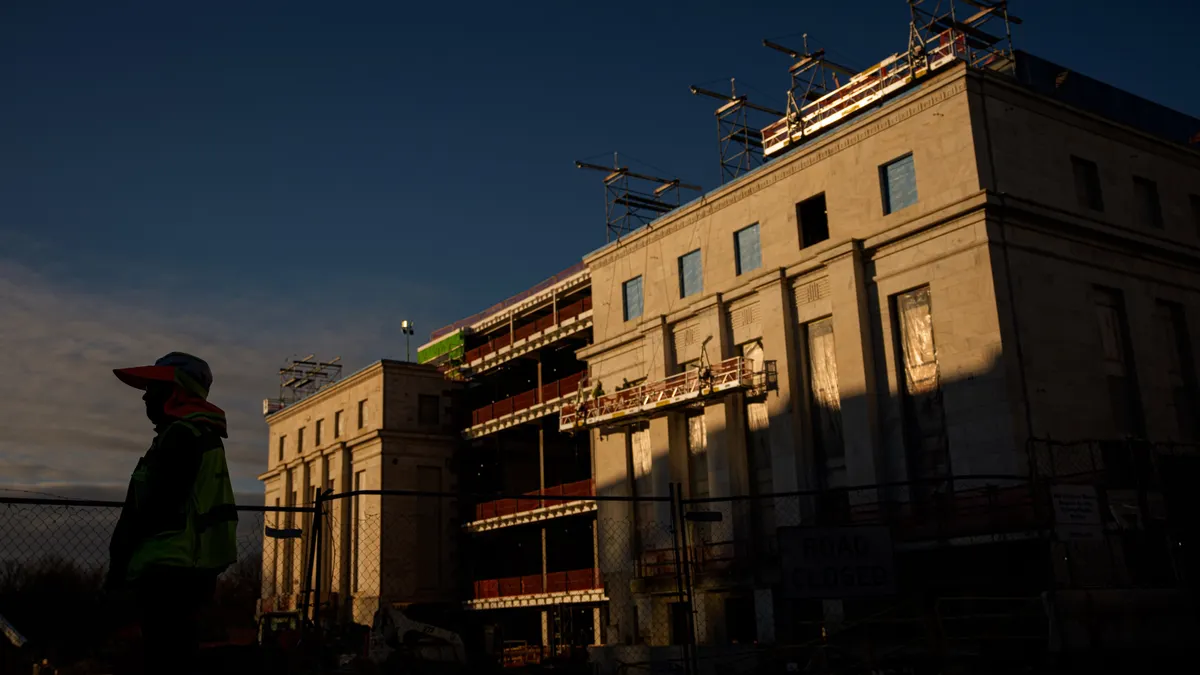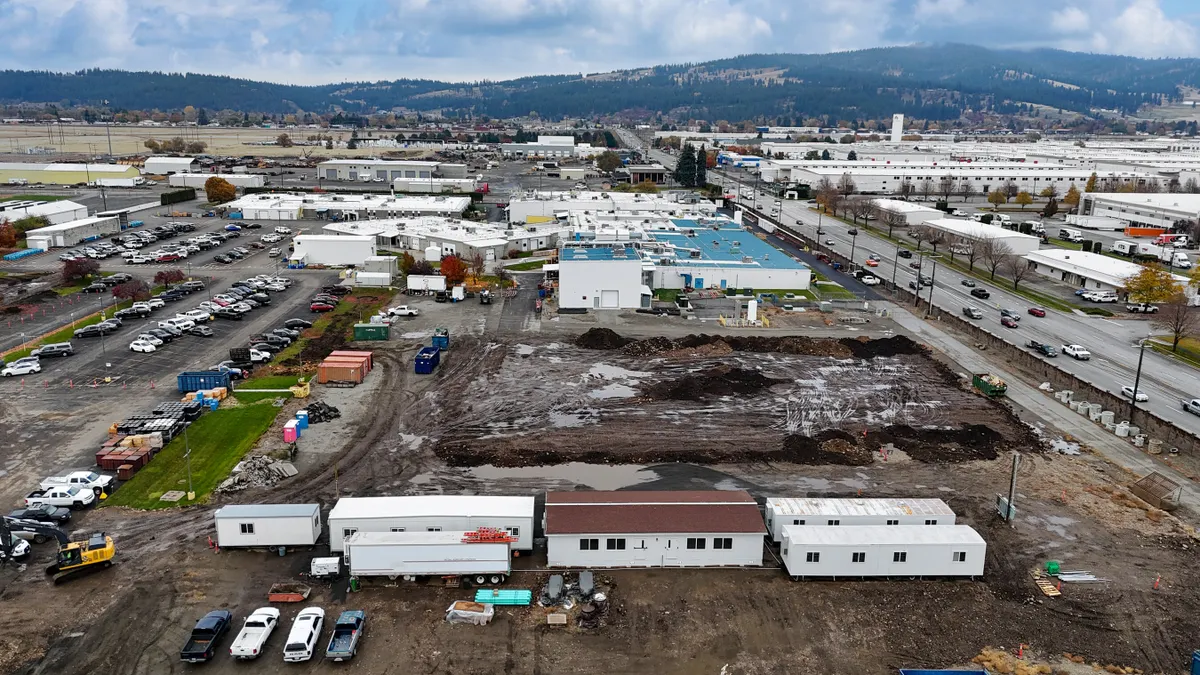With June coming to a close this week, the second quarter is nearing its end. Now that we're halfway through the year, Construction Dive is taking a look back at some of the most notable stories of the first half of 2016.
New federal regulations
The Department of Labor caused an industry dust-up this year with its update of the silica rule. In fact, the pushback isn't over, as construction trade organizations have filed suits to block the rule from implementation. The department said the rule is necessary to save more lives each year, while the industry maintains that the new rule creates unattainable standards of detection, remediation and medical surveillance and will cost the construction industry billions of dollars a year.
Silica, however, is not the only issue facing major industry pushback recently. The National Association of Home Builders and other industry trade associations testified before Congress this year about regulations that can add as much as 25% onto the cost of building a home. Prevailing wage requirements, new overtime rules and regulatory costs associated with land development and the construction itself are all dampening the housing recovery and contributing to the housing market's low inventory, high price environment, according to the NAHB.
Lack of housing inventory
Housing supply is at critical lows, and it seems the gap between supply and demand is growing wider with each new housing report. According to the Urban Institute, only six new homes are being built for every 10 new households. In fact, Lennar homes CEO Stuart Miller recently called the housing shortage "the new normal" and said even 1 million new starts a year won't fix the situation, especially considering the fact that some homebuilders are enjoying the high prices resulting from increased competition for the inventory that is on the market, he said.
Of course, this trend has made homebuying even more difficult for first-time buyers who are not only dealing with the prospect of saving for a down payment, but now have to confront a marketplace that offers a significantly lower stock of starter homes than it has in decades. Affordable housing did win somewhat of a victory this year, though. The California Builders Association sued the city of San Jose in 2010 for its requirement that builders include 15% affordable units in most new developments. The builders' group took its arguments all the way to the U.S. Supreme Court, which denied to review the case.
New technology innovations
The construction industry technology front has also been bursting at the seams with news this year, with developments in 3-D printing technology, laser scanning, building information modeling (BIM) and drones.
The 3-D printing industry has experienced a series of stops and starts this year, with, for the most part, big ideas being more common than wider-use applications. Dubai blew all of the 3-D printing news out of the water with its announcement that by the year 2030, 25% of all the new buildings in Dubai would be 3-D-printed. In fact, shortly after that announcement, Dubai unveiled the world's first fully functional 3-D-printed office, built in only 17 days.
Laser scanning technology has also moved to the forefront of the construction industry. By shooting laser points from within a building, modelers can benchmark a structure prior to renovation or simply get accurate point-in-time representations of the building as it progresses through construction.
BIM also hit new heights this year with the implementation of the United Kingdom's Level 2 BIM mandate. Contractors who want to perform public works project in the U.K. must now be able to transfer information via a common file format. While this doesn't exactly require modeling, whispers from across the pond say that new levels of BIM implementation could soon be introduced to require that additional step.
Drone proliferation and rule changes
The construction industry is a major industry player in the drone world. The Association for Unmanned Vehicle Systems International reported in April that the construction and infrastructure industries are two of the biggest users of drones. The Federal Aviation Administration has given construction and infrastructure businesses 1,800 exemptions, almost 60% of all industry requests for exemptions — which is also almost 40% of the total 4,600 exemptions the FAA has approved.
Just last week, the industry welcomed the Federal Aviation Administration's announcement that it had finally issued a long-awaited set of rules for their commercial use. Up until this rule announcement, those who wanted to use drones for any commercial purpose had to fill out an exemption form and submit it to the FAA.
Vikings stadium construction saga
The $5 billion U.S. Bank Vikings stadium project wrapped up this year, with general contractor Mortenson Construction turning over the keys to the Minnesota Sports Facilities Authority just last week. Mortensen completed the job approximately six weeks early.
However, the project was touched by tragedy last summer when two workers slipped and slid down the unfinished roof. One worker died and one was severely injured, and this month, the Minnesota Occupational Safety and Health Administration cited and fined both Mortenson and the workers' employer Berwald Roofing $173,000, an action that both companies have contested. In addition, Mortenson was involved in an extended $15 million change order dispute with the Minnesota Sports Facilities Authority during the course of the project, but the dispute was settled in February.
CA bullet train woes
Another high-profile project this year has been the California High Speed Rail Authority's plans for a bullet train from Southern California to Northern California. Last year, The Los Angeles Times published the results of an investigation into the operation, financing and logistics of the bullet train that suggested authority officials weren't honest with the state legislature during the rail's approval process. This kicked off a series of internal investigations and legislative hearings, which have been a constant distraction from the rail construction itself.
In a cost- and time-cutting measure, the rail authority decided to scuttle its plans for an inaugural segment out of Southern California — largely due to lack of land purchases and the as-of-yet unknown cost of tunneling through a mountain range north of Los Angeles — and instead focus on an initial Northern California route. The authority somewhat reversed course a short time after that announcement and re-added Merced, CA, as a stop on the first route after residents and businesses there strongly protested the change. Most recently, the authority announced that it would pay Tutor Perini almost $63 million in delay-related change orders after the contractor mobilized manpower, equipment and material to begin rail construction in 2013.






